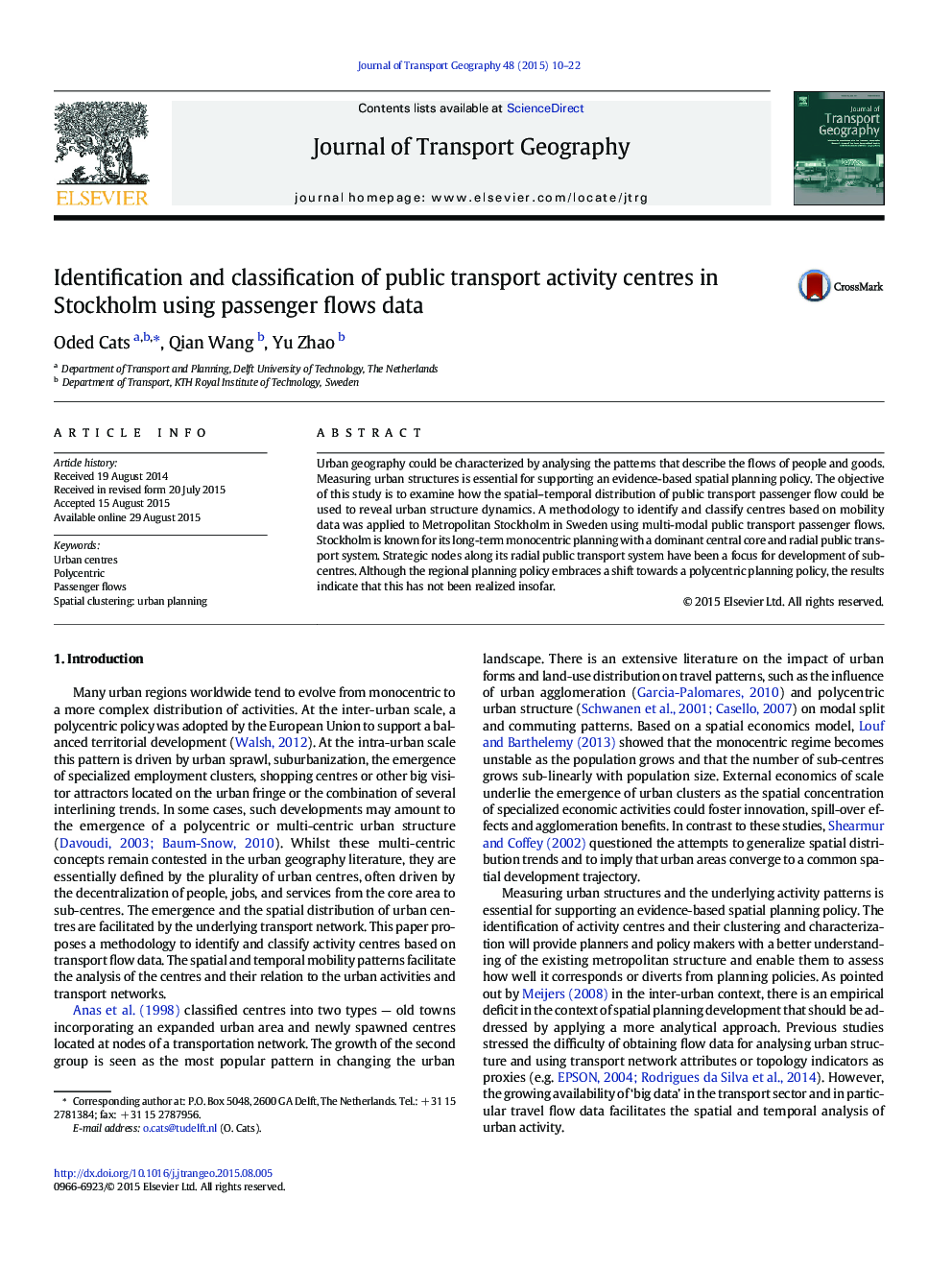| Article ID | Journal | Published Year | Pages | File Type |
|---|---|---|---|---|
| 7485765 | Journal of Transport Geography | 2015 | 13 Pages |
Abstract
Urban geography could be characterized by analysing the patterns that describe the flows of people and goods. Measuring urban structures is essential for supporting an evidence-based spatial planning policy. The objective of this study is to examine how the spatial-temporal distribution of public transport passenger flow could be used to reveal urban structure dynamics. A methodology to identify and classify centres based on mobility data was applied to Metropolitan Stockholm in Sweden using multi-modal public transport passenger flows. Stockholm is known for its long-term monocentric planning with a dominant central core and radial public transport system. Strategic nodes along its radial public transport system have been a focus for development of sub-centres. Although the regional planning policy embraces a shift towards a polycentric planning policy, the results indicate that this has not been realized insofar.
Keywords
Related Topics
Life Sciences
Environmental Science
Environmental Science (General)
Authors
Oded Cats, Qian Wang, Yu Zhao,
